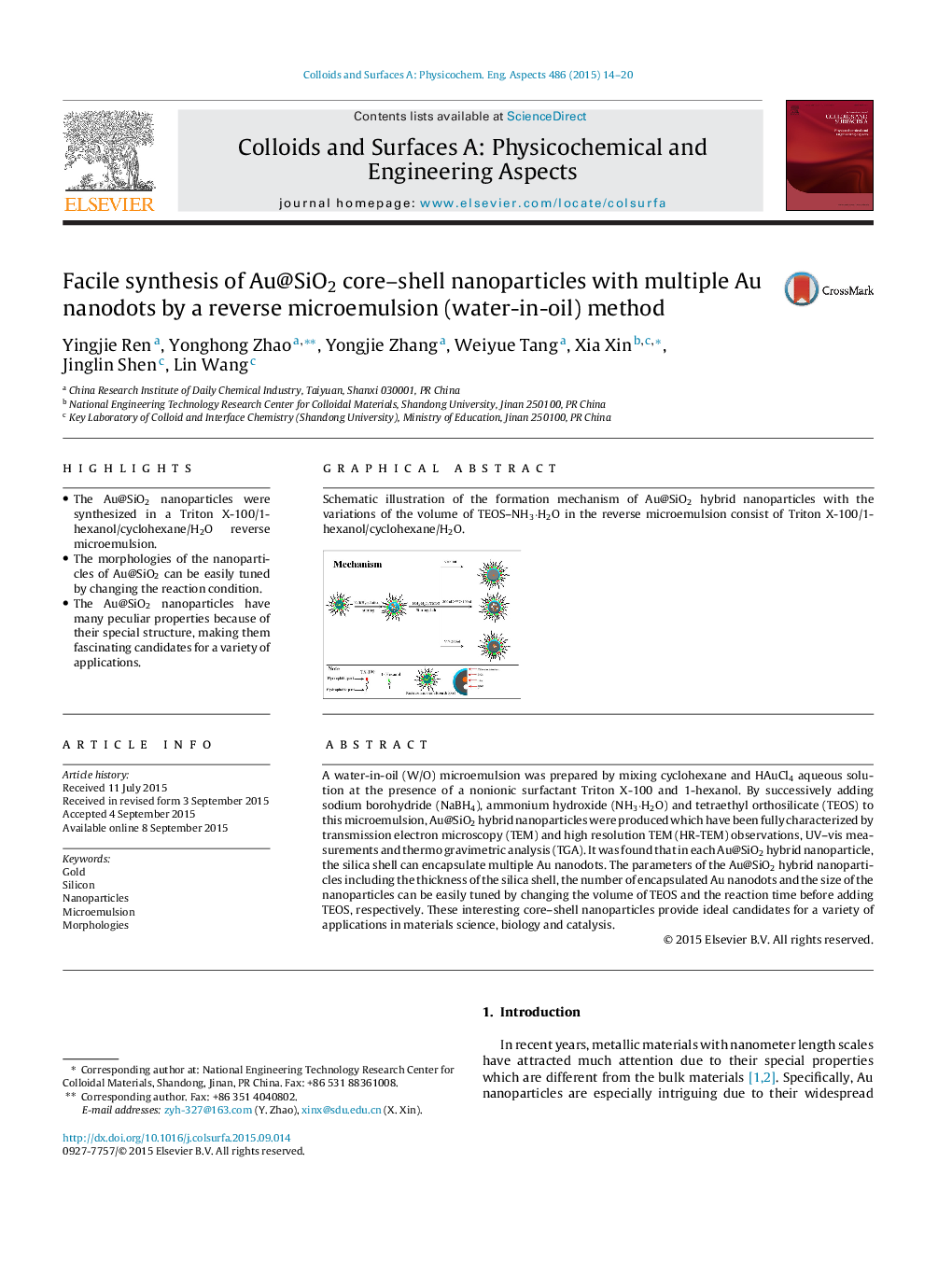| Article ID | Journal | Published Year | Pages | File Type |
|---|---|---|---|---|
| 591918 | Colloids and Surfaces A: Physicochemical and Engineering Aspects | 2015 | 7 Pages |
•The Au@SiO2 nanoparticles were synthesized in a Triton X-100/1-hexanol/cyclohexane/H2O reverse microemulsion.•The morphologies of the nanoparticles of Au@SiO2 can be easily tuned by changing the reaction condition.•The Au@SiO2 nanoparticles have many peculiar properties because of their special structure, making them fascinating candidates for a variety of applications.
A water-in-oil (W/O) microemulsion was prepared by mixing cyclohexane and HAuCl4 aqueous solution at the presence of a nonionic surfactant Triton X-100 and 1-hexanol. By successively adding sodium borohydride (NaBH4), ammonium hydroxide (NH3·H2O) and tetraethyl orthosilicate (TEOS) to this microemulsion, Au@SiO2 hybrid nanoparticles were produced which have been fully characterized by transmission electron microscopy (TEM) and high resolution TEM (HR-TEM) observations, UV–vis measurements and thermo gravimetric analysis (TGA). It was found that in each Au@SiO2 hybrid nanoparticle, the silica shell can encapsulate multiple Au nanodots. The parameters of the Au@SiO2 hybrid nanoparticles including the thickness of the silica shell, the number of encapsulated Au nanodots and the size of the nanoparticles can be easily tuned by changing the volume of TEOS and the reaction time before adding TEOS, respectively. These interesting core–shell nanoparticles provide ideal candidates for a variety of applications in materials science, biology and catalysis.
Graphical abstractSchematic illustration of the formation mechanism of Au@SiO2 hybrid nanoparticles with the variations of the volume of TEOS–NH3·H2O in the reverse microemulsion consist of Triton X-100/1-hexanol/cyclohexane/H2O.Figure optionsDownload full-size imageDownload as PowerPoint slide
